
Archive for March, 2012
Labs around the world enabling DNSSEC
Posted by Mark Feldman in Uncategorized on March 30, 2012
In addition to planning for DNSSEC and applying metrics, Government and TLD registry labs around the world are producing tools that enable the deployment of DNSSEC.
In the case of the ccTLDs, these same countries are leading in the adoption of DNSSEC. The rest of us benefit from their sharing their work. Following are some of the labs and what they provide.
CZ.NIC Labs (ICANN 44 is being hosted by CZ.NIC):
- DNSSEC Hardware Tester
- DNSSEC Validator Extension for Web Browsers
- Knot Authoritative DNS Server
- Unbound validating recursive and caching DNS resolver
- Dnssec-Trigger local Unbound server for end-system validation
- NSD authoritative only, high performance, simple and open source name server
- DNS Check DNS server checking and error reporting
- DNSViz DNS visualization tool
US DHS S&T Cyber Securtity R&D-funded:
- DNSSEC Debugger DNSSEC analyzer
FCC recommendations promote DNSSEC capability
Posted by Mark Feldman in Uncategorized on March 22, 2012
The US Federal Communications Commission‘s Communications Security, Reliability, and Interoperability Council (CSRIC) has come out with recommendations to ensure that end-users’ ability to use DNSSEC is not impaired by ISP infrastructure. The report is not yet out, but there is a fact sheet and a press release that states:
DNS Best Practices:
CSRIC recommended that ISPs implement best practices to better secure the Domain Name System. DNS works like a telephone book for the Internet, but lack of security for DNS has enabled spoofing, allowing Internet criminals to coax credit card numbers and personal data from users who do not realize they are on an illegitimate website. DNSSEC is a set of secure protocol extensions that prevent such fraudulent activity. This recommendation is a significant first step toward full DNSSEC implementation by ISPs and will allow users, with software applications like browsers, to validate that the destination they are trying to reach is authentic and not a spoofed website.
The slide presentation (2.7MB pptx) on DNSSEC from today’s meeting is available from the CSRIC III web site, as are FCC chairman Genachowski’s remarks. A video of the meeting is also on the FCC’s web site.
Is a $70 router fast enough for DNSSEC?
Posted by Olafur Gudmundsson in Adoption, Case Studies, DNSSEC on March 22, 2012
In a blog post a few days ago, Bob Novas talked about configuring an inexpensive home router as a DNSSEC validator for a home/small office network.
Such a router has much less computational power than most computers today, so many people assume it is not fast enough to do DNSSEC validation. To test that assumption, I ran the router through a set of tests designed to measure DNS and DNSSEC validation performance. I ran each of the following tests in sequence against the router with DNSMASQ (the default, non-validating forwarding resolver used by OpenWrt), Unbound without validation, and Unbound with validation:
- Test #1 Cold cache: query for X signed names from 2 different zones
- Test #2 Warm cache: query once for each of the names in #1
- Test #3 Mixed case query for the names in cache and intermingle 30% queries for names not in cache
- Test #4 Remote Ask for 50 nonexistent names in .gov
In tests 1-3, the names queried are from zones served by authoritative servers on the same LAN, minimizing network delays.
The reason I have the value X above is that I use different values depending on the speed of the device under test. The goal of the tests is to run experiments #1 and #3 for just long enough to get meaningful results.
When running without DNSSEC, DNSMASQ and Unbound performed about the same In the Cold test — around 700 queries/second.
Unbound was six times faster on the Warm test since it caches responses and DNSMASQ doesn’t. Unbound was two faster on Mixed test for the same reason.
With DNSSEC turned on, Unbound was able to handle about 140 validated queries/second, which is quite fast. This is with answers that are signed by a 1024-bit RSA key. It ran at the same speed as it did without DNSSEC in the Warm case.
This performance is more than enough for a home or small office.
When comparing the results for the Remote test, validating Unbound finished in about seven seconds while non-validating DNSMASQ took about ten. Network delay, not validation time, dominates the time to perform this test. In non-test situation, DNSSEC validation thus will not be a bottleneck when the doing lookups from the Internet.
Menu for .UA DNSSEC deployment
Posted by Mark Feldman in Uncategorized on March 19, 2012
At ICANN43, Steve Crocker, ICANN Board Chairman and DNSSEC Deployment Initiative memember, met with Dmitry Kohmanyuk, the .UA hostmaster. On the back of a menu for the Gala Dinner, Dmitry outlined the plans for .UA DNSSEC deployment.
Crocker notes
This makes the set of DNSSEC deployment maps I presented on the 14th obsolete, and I’m very happy about that.
Planned .UA DNSSEC a of 14 March 2012
(As with other menus, substitutions may occur)
- Experimental: 1 March 2012
- Announcement: 3 December 2011
- Partial Operation: 1 April 2012
- DS in Root: 15 April 2012
- Full Operation: 1 December 2012
A validating recursive resolver on a $70 home router
Posted by Bob Novas in Adoption, DNSSEC, Technical guides on March 15, 2012
As an experiment, I installed a validating recursive resolver on a home/SOHO router. I also set the router to advertise this resolver in DHCP as the DNS server for the LAN served by the router. The experiment was a resounding success — the clients on the router LAN only receive Secure or Provably Insecure DNS responses and do not receive Bogus responses.
I was able to verify this by navigating to a bogus addresses. For example, here is a screen shot of navigating to a domain with a bogus signature (http://bogussig.dnssec.tjeb.nl). If you are on a non-validating network, you will be able to resolve this link. If your network is validating, however, you should get an error if you click the link.
The HttpWatch browser plugin shows that the DNS query for this address very quickly returns an error.
So, how did I do this? I started with a Buffalo WZR-HP-G300NH v2 router, which I purchased online for just under US$70. The router runs a customized version of the DD-WRT Open Source software out of the box. The router has 32MB of NVRAM and 64MB of RAM. The basic configuration with an Unbound recursive resolver requires about 10MB of NVRAM, so this router has more than enough storage.
A few words of caution. Not all routers are suitable — you need to have a router that is supported by OpenWRT and the router needs to have enough flash memory. Also, you may lose any special features that are included in the manufacturer’s firmware. For the router I used, I lost the “movie engine” feature and the ability to support a file system on the router’s USB port. I could have loaded more packages from OpenWRT to support a file system. Finally, there is a risk that you will brick the router — i.e., turn it into a paperweight. You’ll need some level of expertise with technology and a platform that supports telnet, ssh and scp (e.g., Cygwin on Windows, or a Mac or Linux box).
Because of the greater ease of configuration that it offers, I reflashed the router with the OpenWRT router software. Then I loaded and configured Unbound, a BSD-licensed recursive resolver and was up and running.
Here are the specifics of how I accomplished this:
- I downloaded the right firmware image for the router from the OpenWRT nightly build site. For the Buffalo WZR-HP-G300NH2 router, I used this build for the squashfs file system for a system upgrade. The system upgrade is because I was going from a DD-WRT build to an OpenWRT build. Other firmware images are available for this router that are specific to other circumstances. If you are not flashing this specific router, you will need to establish the right firmware to use for yourself.
- I connected my PC to a LAN port on the router. I set the PC to use an address on the same subnet as the router – in my case 192.168.1.10 as the router is at 192.168.1.1.
- I pointed my browser at the router, set a password, and logged in to the router’s Web UI.
- I navigated to the Administration/Services page and enabled the SSH daemon. At the same time I set up the authentication for SSH.
- From a terminal window on my PC, I copied the OpenWRT firmware to the router.
scp openwrt-ar71xx-generic-wzr-hp-g300nh2-squashfs-sysupgrade.bin [email protected]:/tmp
- I then logged into the router via ssh to flash OpenWRT onto the router in place of the supplied dd-wrt:
ssh [email protected] cd /tmp mtd -r write openwrt-ar71xx-wrz-hp-g300nh2-squashfs-sysupgrade.bin linux
- I waited for a good long while. When the red light stopped blinking, I had successfully flashed the router. It did not yet have a Web UI, but I was able to access it using telnet.
- I used telnet to acces the router with no username or password and set a password. This should disable telnet and enable ssh with that password (username root):
telnet 192.168.1.1 set a password when prompted
- I connected an Ethernet cable from my home LAN to the router’s WAN port (you could also connect the cable directly to your cable or DSL modem).
- I ssh’d into the router and loaded and installed the router’s Web UI, called luci:
ssh [email protected] opkg update opkg install luci ⁄etc⁄init.d⁄uhttpd enable ⁄etc⁄init.d⁄uhttpd start
- At this point I was able to login to the router’s Web UI by pointing my browser to 192.168.1.1. On my first login, I needed to set a username and password. I found that no matter what username I set, I always needed to use the username root to login to the router via ssh. It did use the password I set, however.
- I think the best thing to do next is to move the router’s LAN subnet to another subnet. My primary subnet (i.e., the one my ISP’s router provides and the one I have plugged into the router I’m working on’s WAN port) is 192.168.1.x. I logged in to the router’s Web UI and moved the router’s LAN to 192.168.2.1. This avoid IP address conflict between the two subnets. Since my PC is plugged into the LAN port of the router, I had to change my PC’s address to something like 192.168.2.10 so it can talk to the router once it’s on 192.168.2.1.
- I then ssh’d back into the router and installed unbound (This can also be done this using the Web UI from the System/Software page). I ssh’d into the router and used opkg to install Unbound:
ssh [email protected] opkg install unbound
- I enabled Unbound at startup by navigating a browser to the router’s System/Startup page and clicking on Unbound’s Enabled button to turn it to Disabled.
- I disabled dnsmasq’s (the default DHCP and DNS server on the router’s) DNS function by navigating the browser to the Network/DHCP and DNS/Advanced page and setting DNS Server Port to 0 (zero).
- Finally, from my ssh session, I told dnsmasq to advertise the router (unbound, really) as the DNS server in DHCP responses:
uci add_list dhcp.lan.dhcp_option="6,192.168.2.1" uci commit dhcp ⁄etc⁄init.d⁄dnsmasq restart
At this point, my router was up and running, dnsmasq’s DHCP was advertising the router as the DNS server, and Unbound was running as a recursive resolver on the router. All computers I put on the 192.168.2.1 router’s LAN that auto-configure using DHCP used this router’s unbound resolver for DNS, and are protected by DNSSEC. My network is configured as shown in the figure below.
One thing we noticed after running the router for a few days — be sure to leave NTP running on the router. In our case, we turned NTP off for some debugging and forgot to turn it back on (NTP is on the OpenWRT System/System page, under “Enable buildin NTP Server”.) After a few days, the router’s time was far enough off to cause validation to fail. Time is important for validation to work correctly because DNSSEC signatures have inception and expiration times.
We plan on doing some benchmarking of Unbound’s performance on this platform and on doing similar experiments with other routers. Email us at info @ dnssec-deployment.org with your experience doing this or any questions or feedback.
Have some DNSSEC with your Pi
Posted by Mark Feldman in Uncategorized on March 12, 2012
If Pi Day (3/14 in month/day format) isn’t already enough to make this Wednesday a great day, the DNSSEC workshop at ICANN 43 will be streamed live. The streaming information, detailed agenda, and presentations are all available on the DNSSEC Workshop page. The workshop is scheduled to start at 8:30AM CST (UTC-6).
DNSSEC in ccTLDs, Past, Present, and Future
Posted by Mark Feldman in Uncategorized on March 12, 2012
This animated GIF shows announced, estimated, and actual DNSSEC adoption by ccTLDs from January 2006 through July 2014 as of March 6, 2012. The map is a work in progress. We’re pretty sure about the past and present. If you manage a ccTLD and have a schedule for deployment or have updates/corrections, let us know at info @ dnssec-deployment.org. We’d like to see a more colorful, even completely red, map in the future.
Key:
- Experimental: We have reason to believe the ccTLD is experimenting with DNSSEC.
- Announced: The ccTLD has announced that they will support DNSSEC.
- Partial Operation: The ccTLD is signed, though possibly doesn’t have its DS in the root or isn’t taking signed delegations.
- DS in Root: The ccTLD has placed its DS in the root.
- Operational : The ccTLD is signed, its DS is in the root, and it is taking signed delegations.
Some Fragments are more equal than other fragments
Posted by Olafur Gudmundsson in Adoption, DNSSEC, Technical guides on March 9, 2012
[Update of a post from January 28’th 2010 to fix broken links and add details]
My last post was about being able to receive fragmented DNS answers over UDP.
Last week (that is on January 20’th 2010) , I did a minor revision to a script of mine that checks to see if all of the name servers for a zone have the same SOA record and support EDNS0. This will indicate whether the servers are in sync and can serve DNSSEC. During testing of the updated script all the servers for .US timed out. This had never happened before, but .US turned on DNSSEC last month, so I started to investigate.
First I issued this query in dig format:
dig @a.gtld.biz US. SOA +dnssec +norec
Time-out confirms my script is reporting correctly. Then I tried again: (not asking for DNSSEC records)
dig @a.gtld.biz US. SOA +norec
This worked, the server is alive and the question has an answer, Then I tried getting the DNSSEC answer using TCP:
dig @a.gtld.biz US. SOA +norec +dnssec +tc
This gave me a 1558 byte answer (too large for one UDP packet) so fragmentation is needed to get over Ethernet links. But my system can handle big answers, so what’s wrong?
At this point I had number of questions:
- “What is NeuStar (the .US operator) doing?”
- “Are any other signed domains showing the same behavior?”
- “Are the fragments from these servers different from other fragments?”
First things first; “What is .US returning in their SOA answer?”
- In the answer section they give out the signed SOA record.
- In the authority section there is a signed NS set.So far, so good.
- In an additional section there are the glue A and AAAA records for the name servers, AND a signed DNSKEY set for the US. zone.
Conclusion: NeuStar is not doing anything wrong, but there is no need for the DNSKEY in the additional section. As this is turning up some fragmentation issues, I consider this a good thing.
At this point I moved on to the second question; “Is anyone else showing the same behavior?” All the signed TLD’s that I queried returned answers of less than 1500 bytes, so no fragmentation was taking place. I modified my script to ask for larger answers in order to force fragmentation. Instead of asking for type “SOA”, I ask for type “ANY”. For signed domains this should always give answers that are larger than 1500 bytes, since signed SOA, DNSKEY, NS and NSEC/NSEC3 are guaranteed to be in the answer and possibly others. Now things got interesting.
Almost all of the signed TLDs had one or more servers that timed out. .Org, for example, had 4 out of 6, .CH had 2, and .SE had one. So the issue is not isolated to anything that the .US operator is doing, but an indicator of something bigger.
I copied my script over to another machine I have and ran it there, and lo and behold, I got answers – no time-outs. The first machine is a FreeBSD-7.2 with PF firewall, the second machine is an old FreeBSD-4.12 with IPFW.
Now on to the next question; “Are the fragments different?” A quick tcpdump verified that answers were coming back. I fired up wireshark tool to do full packet capture. To make the capture smaller I activated the built-in DNS filter, and ran my script against the .ORG servers and the .US servers.
Looking at the DNS headers there was nothing different, and the UDP headers looked fine. On the other hand I noticed that the IP header flags field from the servers that timed out all had DF (Do Not Fragment) set on all packets, and on the first packet in the fragmentation sequence both the DF and MF (More Fragments) bits were set. MF tells IP that this is a fragmented upper layer packet and this is not the last packet. At this point I wondered if somehow this bit combination was causing problems in my IP stack or the firewall running on the host.
I disabled the PF firewall and suddenly the packets flowed through. After doing some searching on the Internet I discovered that I can tell PF to not drop these packets.
My old PF configuration had
scrub in all
The new one is
scrub in all no-df
Removing the scrub command also allows the packets to flow, but I do not recommend that solution.
I started asking around to find out what is causing the DF flag to be set on UDP packets, and the answer was “Linux is attempting MTU discovery”. I also noticed that for the last 2 years Bind releases have added code to attempt to force OS to not set DF on UDP packets. See file: lib/isc/unix/socket.c look for IP_DONTFRAG.
Conclusion: the tools I mentioned in the last post do not test to see if these malformed fragments are getting through. I have updated my perl script to ask for a large answer from an affected site, and to report on that. Please let me know if you have the same issue and what you did to fix it on your own systems and firewalls.
DNSSEC in Higher Education — 1% isn’t enough
Posted by Mark Feldman in Uncategorized on March 7, 2012
Institutions of higher education throughout the world have been key advocates of Internet technologies. The .EDU gTLD is signed, however, a recent survey of .EDU names shows that only about one percent are signed. While this is a greater than the Internet as a whole, it is far less than TLDs that are requiring or otherwise strongly advocating DNSSEC.
On the pedestrian side, colleges and universities present a microcosm of the Internet as a whole, replete with cyber attacks, some of which could prevented by a combination of DNSSEC signing and validation. On the academic side, DNSSEC adds to the authenticity of the academic work product.
If you teach at, work at, attend, or attended any of the following, congratulations — your school is signed:
| acadiana.edu | baker.edu | berkeley.edu |
| bucknell.edu | carnegiemellon.edu | cltc.edu |
| cmu.edu | coloradomesa.edu | csupomona.edu |
| cuhk.edu | desales.edu | fhsu.edu |
| fhtc.edu | gtc.edu | hfg.edu |
| highlands.edu | indiana.edu | indianatech.edu |
| internet2.edu | iu.edu | iub.edu |
| iupui.edu | jhuapl.edu | kestrel.edu |
| lctcs.edu | lsu.edu | ltc.edu |
| ma.edu | mesa.edu | mesastate.edu |
| millikin.edu | minnesota.edu | monmouth.edu |
| mst.edu | myneltc.edu | nau.edu |
| northcentral.edu | northshorecollege.edu | nwltc.edu |
| oxford-university.edu | pacificu.edu | penn.edu |
| psc.edu | richland.edu | rockefeller.edu |
| scl.edu | sdsmt.edu | southern.edu |
| suu.edu | tilburguniversity.edu | tiss.edu |
| truman.edu | ualr.edu | ucaid.edu |
| ucb.edu | ucberkeley.edu | uccv.edu |
| ucr.edu | uiowa.edu | umbc.edu |
| uni-stuttgart.edu | upenn.edu | upf.edu |
| valencia.edu | washjeff.edu | weber.edu |
We’re sorry if your school is signed and we missed it. Our survey was limited to the .EDU gTLD. We know that many schools outside of the US are under their countries’ academic second-level domains or directly under their countries’ ccTLDs. If your school isn’t signed, DNSSEC resources tailored to Higher Education are published by:
- EDUCAUSE, the nonprofit association whose mission is to advance higher education by promoting the intelligent use of information technology, manages the .EDU TLD and worked to get it signed. They have a collection of resources for their members and others throughout the Internet.
- Internet2, the advanced networking consortium led by the U.S. research and education community, is also supporting DNSSEC within its membership. They have a DNS SIG.
The DNSSEC Deployment Initiative is ready to help. Contact us at info @ dnssec-deployment.org to discuss DNSSEC presentations for conferences and meetings.
US Government Agencies will be required to validate
Posted by Mark Feldman in Uncategorized on March 5, 2012
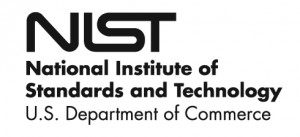 The US National Institute of Standards and Technology (NIST) announced the release of the fourth revision of Special Publication 800-53: Security and Privacy Controls for Federal Information Systems and Organizations last week. NIST SP 800-53r4 (3.3MB PDF) is the latest revision of the FISMA controls that apply to all Federal information systems. This revision includes changes to the two DNSSEC related security controls (SC-20 and SC-21).
The US National Institute of Standards and Technology (NIST) announced the release of the fourth revision of Special Publication 800-53: Security and Privacy Controls for Federal Information Systems and Organizations last week. NIST SP 800-53r4 (3.3MB PDF) is the latest revision of the FISMA controls that apply to all Federal information systems. This revision includes changes to the two DNSSEC related security controls (SC-20 and SC-21).
SC-20 combines the previous Enhancement on provisioning of DS RR’s in the parent zone and make it part of the base control.
SC-21 is changed to require “[t]he information system requests and performs data origin authentication and data integrity verification on the name/address resolution responses the system receives from authoritative sources.” This means that all Federal systems must either request and validate DNSSEC responses, or have a trusted link to a validator that can provide that service for the system. Control SC-21 is also changed to be required for all security levels (Low, Moderate and High).
As with previous revisions of NIST SP 800-53, the final set of controls are official twelve months from the final publication date (estimated to be July 2012). The public comment period for this draft ends on April 6th. Comments should be sent to the FISMA project team at [email protected]


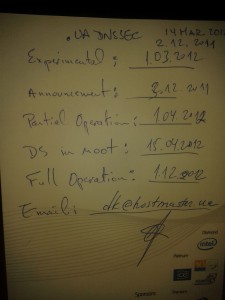
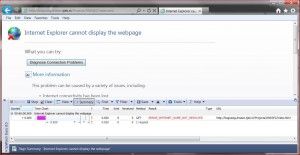
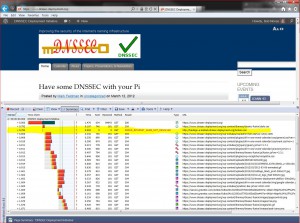
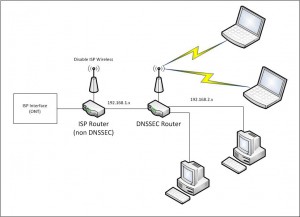
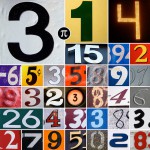
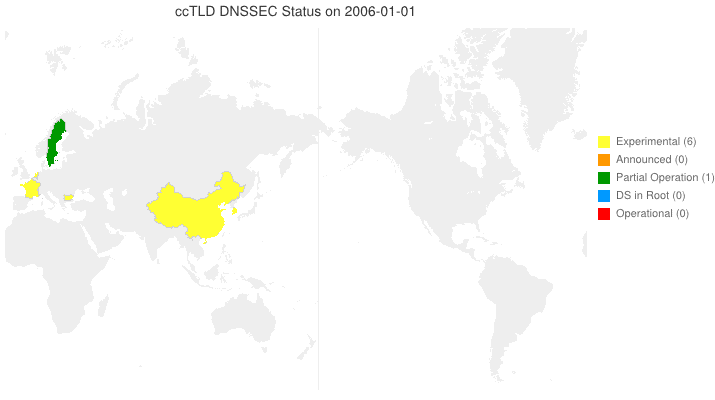

Recent Comments